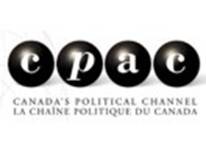
In 1977 the CRTC gave the CBC an exclusive licence to televise the proceedings from Parliament. By 1988, the CBC and the cable industry had joined forces to create the Canadian Parliamentary Channel (CPAC), but in 1991 the CBC withdrew its funding, citing cutbacks as the reason. After the House of Commons provided interim funding for about a year, a consortium of cable operators was formed to finance and run the service, and took over the operation in October of that year. In September 1993 CPAC applied for and received an experimental licence to expand the service to include public affairs programming, and in January 1995 the licence was renewed for seven years. On October 1st 2006 the channel was relaunched, with CPAC now standing for Cable Public Affairs Channel. In October 2005, CPAC was rebranded as Canada’s 24.7 Politics TV, but continued to be popularly referred to as CPAC.
When CPAC marked its 15th anniversary in June 2007, the cable companies who owned the channel were Access, Cogeco, Eastlink, Monarch,Omineca Cablevision, Persona, Rogers, Shaw and Videotron.
On 29 June 2009, the CRTC approved an application by Cable Public Affairs Channel Inc. to amend the broadcasting licences for its English- and French-language satellite-to-cable programming undertakings, by adding to the list of program categories from which it may draw programming so that it might provide music and dance, variety and general interest programming each year on Canada Day.
On August 8th 2013, the CRTC approved CPAC’s application for continued mandatory distribution on the digital cable and satellite specialty channel basic services. At the time, the major shareholders in CPAC were Rogers, Shaw, Vidéotron, and Cogeco, with minority holdings by Bragg Communications, Omineca Cablevision, Monarch Cablesystems and Access Communications.
Written by Pip Wedge – August, 2013
Ownership: Rogers Media & Shaw Media
Start Year: 1992

